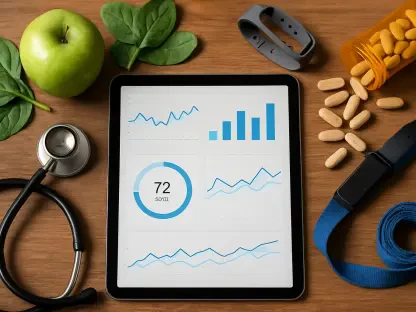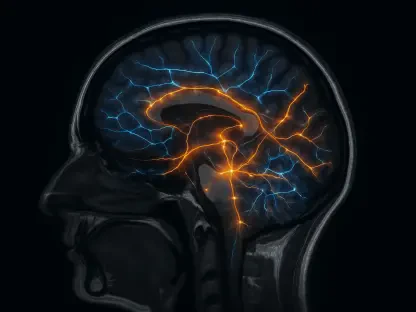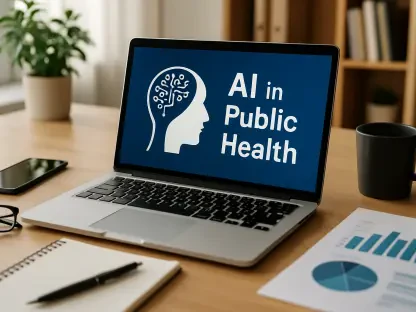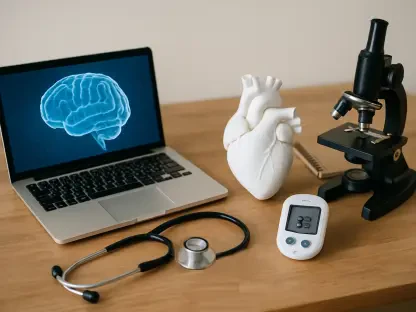Listen to the Article
Picture this: You’re a medical professional starting off your day, but instead of reaching for your stethoscope, you grab your virtual reality headset. Lunchtime rolls around, and you’ve already collaborated with an AI assistant to interpret real-time patient data at lightning speeds. By sunset, your healthcare systems are seamlessly syncing diagnostics and prescriptions with zero friction. While this may sound like something out of a science fiction movie, the truth is that this is the future of healthcare—and it’s closer than you may think.
In the ever-evolving medical landscape, patient healthcare isn’t chained by geographical location or financial constraints—it’s propelled by the immediacy of telemedicine and the autonomous power of robotics. A place where far-off, futuristic ideas are being made an innovative reality, where hyperefficiency thrives. This article will take you down the path of a healthcare transformation, from morning rounds to midnight data logs, and sheds light on where the industry is headed.
Morning Tea with Virtual Reality
The rapid evolution of virtual care and, in turn, telemedicine is fundamentally reshaping the healthcare landscape, with a particular emphasis on how medical services are delivered. The proliferation of telemedicine has changed the game for how healthcare professionals diagnose, monitor, and treat patients through remote means and advanced digital devices—from portable diagnostic tools to innovative communication solutions. For healthcare providers, this shift demands hybrid care models that fluidly combine virtual and in-person consultations.
The Role of VR Tech in Telemedicine
As a critical foundation for virtual healthcare, telemedicine equipment is essential for the high delivery of care for patients outside of the scope of traditional healthcare accessibility. With 87% of rural care facilities leveraging virtual consultations to minimize hospital expenses, patient portals have evolved beyond basic communication platforms. These comprehensive care coordination hubs now have the capabilities to effectively monitor treatments between scheduled sessions.
Additionally, store-and-forward technologies empower specialists to adopt a more asynchronous approach to reviewing diagnostic tests. This ensures the right prescriptions reach the intended patients, regardless of geographic or staffing limitations. This not only improves care outcomes but also allows providers to serve patients at scale without compromising quality, especially amid the rising demand for innovation in the MedTech sector.
Healthcare businesses are under greater pressure to develop new diagnostic technologies that harness enhanced visualizations of complex medical data and surgical simulations to meet the expectations of the digital-centric healthcare environment. These tools are reshaping diagnostics for the modern and transforming the very way patients and professionals interact by shifting the focus from reactive care to proactive health management.
To remain competitive, healthcare organizations need to prioritize the development of scalable virtual care platforms. By amalgamating data intelligence, AI, and intuitive user interfaces across the entire care continuum, these companies stand a better chance of setting themselves apart from the crowd. In turn, they are also better positioned to empower every stakeholder—from patient to provider, with more actionable insights and streamlined access to care.
Afternoon Lunch with Artificial Intelligence
As healthcare pivots into its next digital evolution, AI is no longer a far-off concept, but a mission-critical clinical collaborator. With unparalleled capabilities for speedier and more accurate data analysis, this advanced technology is pushing patient care to the next level. The statistics say it all: diagnostic errors are lessened by nearly 85%, healthcare providers save 20% of time spent on administrative tasks, and the list goes on. Take a closer look at the medical innovations that are changing the healthcare game.
AIDDISON™
There is a powerful paradigm shift at play for pharma and biotech companies relying on embedded AI to advance technological innovations for medical devices and R&D. Merck has created a powerful AI-assisted drug discovery solution, AIDDISON, that identifies molecules that can serve as the basis for a drug. By utilizing its vast potential in discovery, researchers are also able to cut down on the expense—costing up to $2 billion.
Moxi
In the medical device sector, AI is pushing boundaries even further by empowering the development of robotics in the medical field. Diligent Robotics’s Moxi has been introduced as a 4-foot-tall healthcare robot that alleviates nursing staff from routine tasks, such as patient supply delivery and lab sample retrieval. By relying on its advanced automation abilities, clinical professionals can work smarter, while cutting time on non-value-added responsibilities by nearly 30%.
Agentic AI
Traditional AI itself is also evolving to make way for even more advanced solutions that create smoother journeys for both patients and professionals. Agentic AI goes beyond the initial iteration’s reliance on predefined inputs by proactively analyzing data. By doing so, it is able to quickly adapt to emerging situations and make autonomous decisions. When it comes to personalized medicine, Agentic AI is used to identify patterns based on complex genomic data. Doctors are then able to make more informed clinical decisions based on patient-specific information and better support patients in understanding their health.
Evening Dinner with Interoperability
To sidestep treatment delays, missed diagnoses, and increasing healthcare expenses, the healthcare industry is emphasizing the importance of interoperability. By doing so, medical institutions gain more control over their information systems and software applications—making it easier to interpret, communicate, and exchange data efficiently. From test results to medication histories, all healthcare settings are better positioned to provide more comprehensive care by cutting down the risk of error and inefficiency.
Unfortunately, such incidents are more prevalent than you’d think—with medical professionals up to their elbows in the amount of data being transferred from electronic medical records to the public health reporting system. To add fuel to the fire, EMR data formats often don’t align with reporting system requirements, making conversion more complicated. While technology is empowering healthcare systems to be more connected than ever, its data has become more fragmented.
The Importance of Interoperability
Interoperability allows medical institutions to move and meaningfully use data across different devices more seamlessly, while complying with ever-changing regulations. It also ensures that all patient data is easily accessible and structured, which allows stakeholders at all levels to coordinate care more thoughtfully. Interoperable EHR systems instantly put patients’ full medical history in doctors’ hands and support more informed and accurate decision-making.
Above and beyond this, interoperable systems can reduce administrative constraints and operational costs. By streamlining data entry and claims processing, healthcare enterprises are able to reduce redundant and manual tasks. At the same time, businesses can experience fewer billing errors through more accurate patient data transfers and improve staff productivity by shifting focus toward patient care and away from paperwork.
Conclusion
While the medical field is one of the most advanced and evolving sectors today, what was once thought of as impossible is now unleashing unlimited potential for healthcare professionals to ease their experiences and produce unparalleled patient outcomes. From immersive virtual consultations that transcend traditional constraints to AI-enabled technologies designed to ease everyday tasks, professionals and patients can experience smoother journeys altogether.
Best of all, these are no longer future hopes, but a very real potential present. By incorporating innovations like artificial intelligence or advanced interoperability into their processes, healthcare leaders can optimize every facet of care. This is done by streamlining not only how it’s delivered, but also by proactively preparing to readily adapt to the changing landscape. The future is unfolding faster than the industry could imagine—but it’s in your hands to shape.









